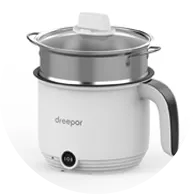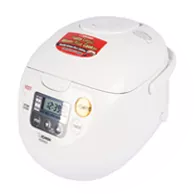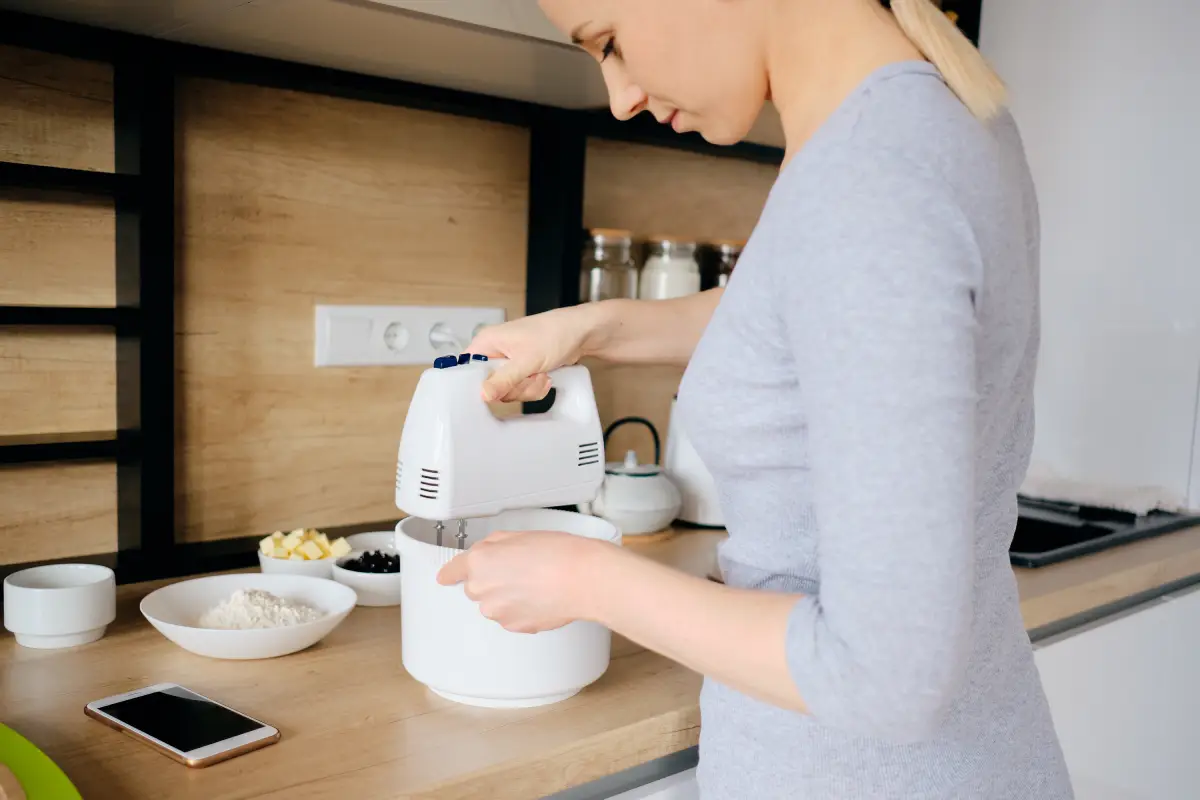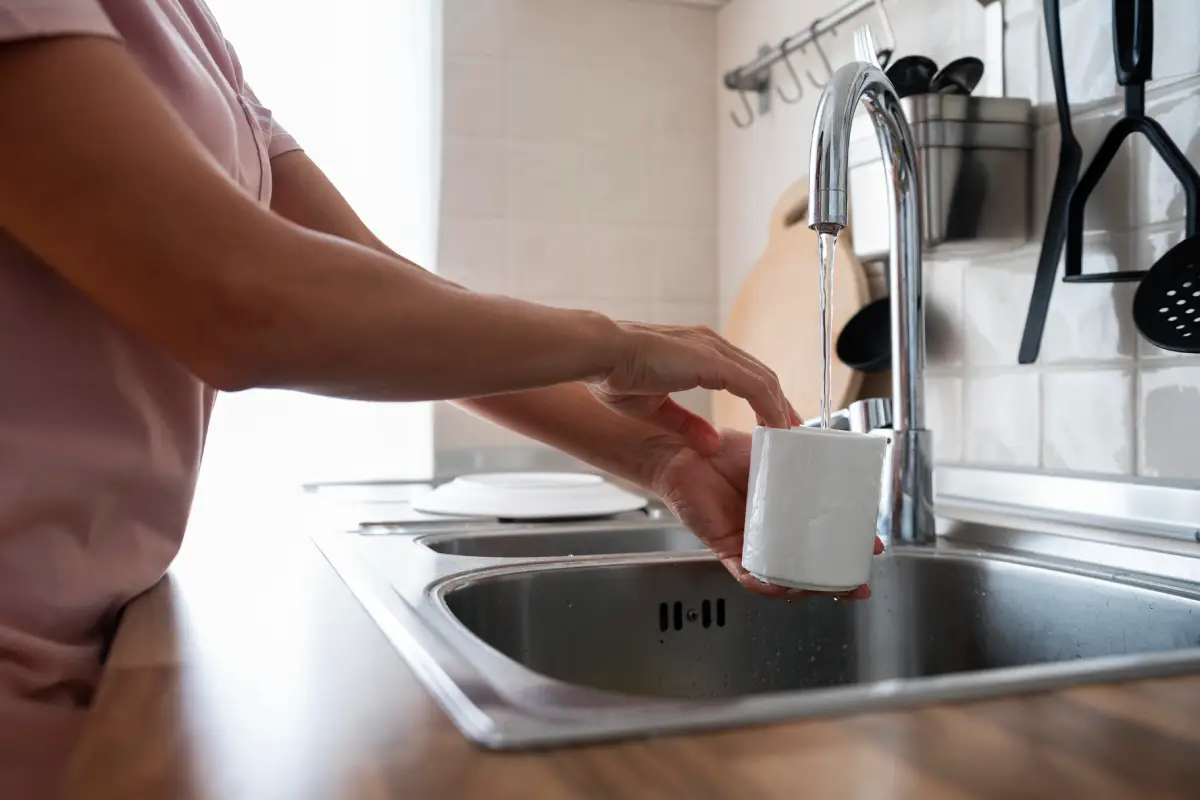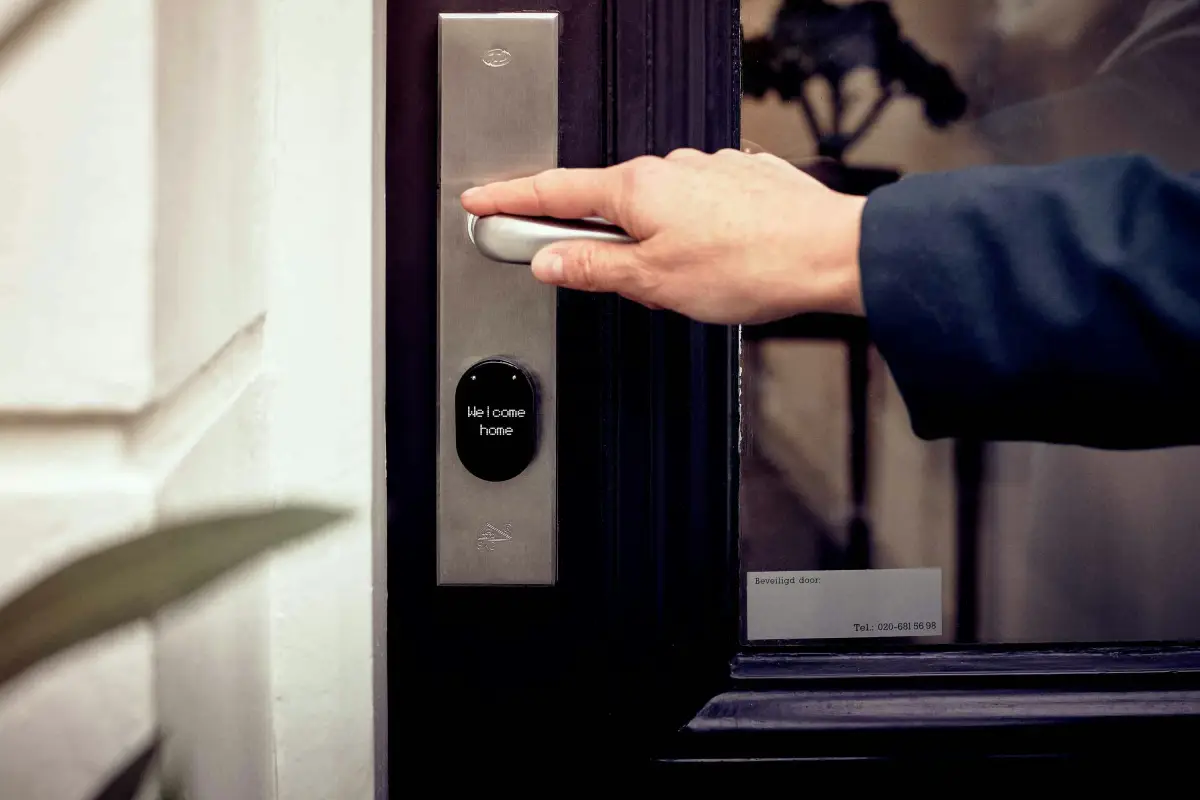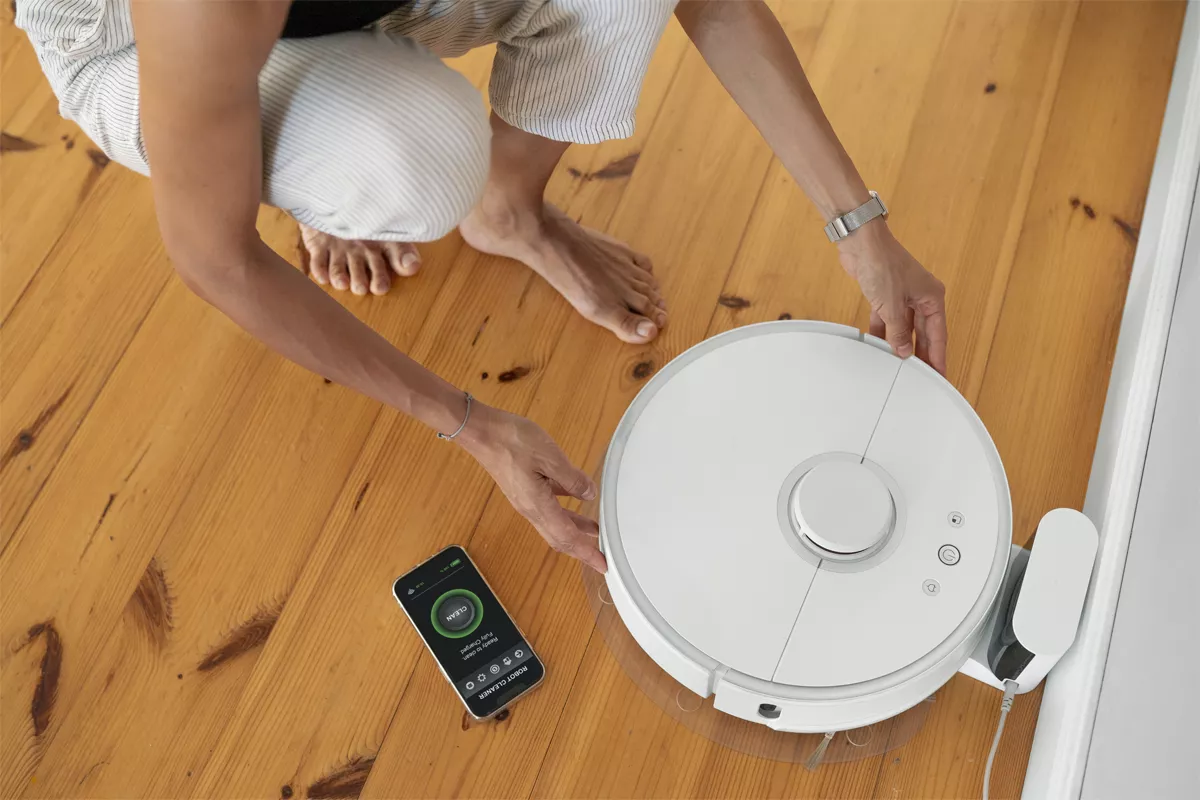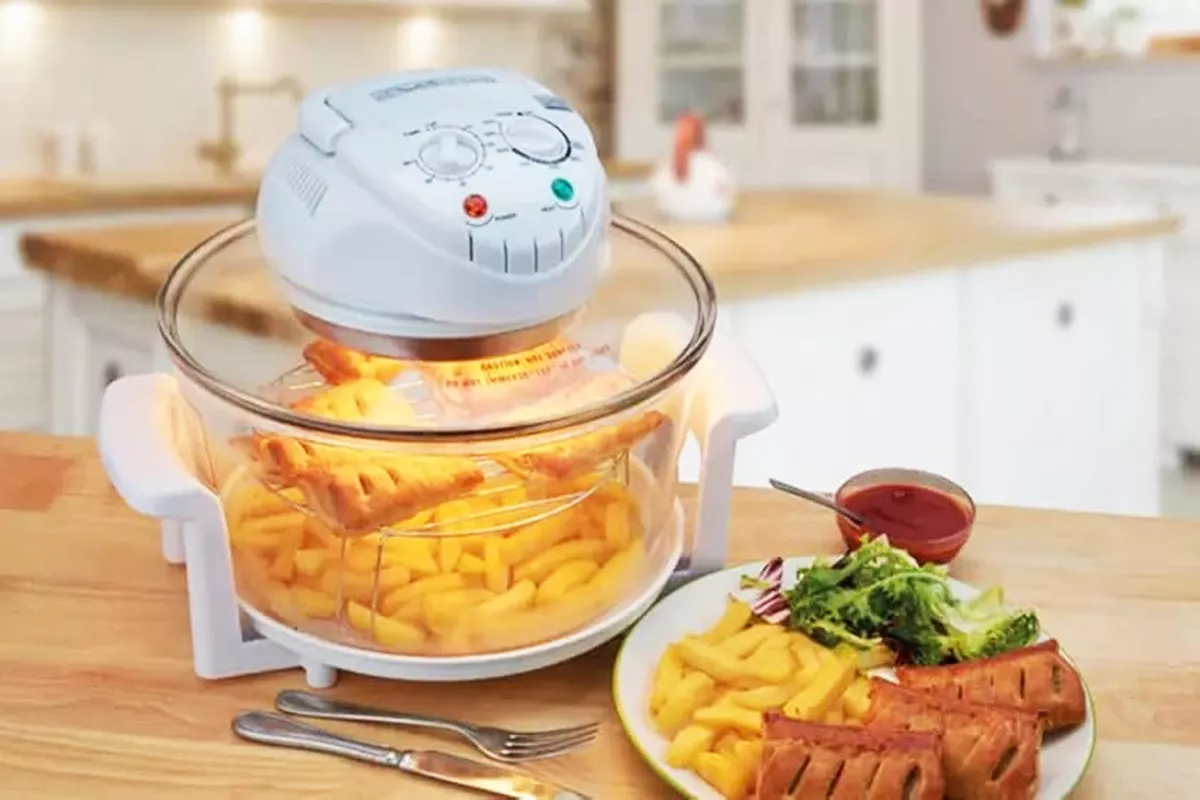Rice is a staple food in the Philippines, and rice cookers play a vital role in every household. These kitchen appliances have evolved over the years to meet the specific needs of Filipino families. In this article, we will explore the world of rice cookers in the Philippines and how they have become an indispensable part of the Filipino kitchen.
Most Affordable
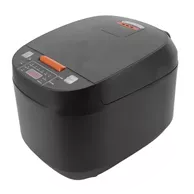
OOKAS Large Capacity 6L Home Multifunctional Electric Rice Cooker
Rice Cookers in the Philippines have become an essential kitchen appliance for households across the country. The convenience, speed, and efficiency they offer in preparing rice are unmatched. In this comprehensive guide, we will explore the world of rice cookers in the Philippines, from choosing the right one to understanding their features and benefits.
Table of Contents
ToggleHistory of Rice Cookers in the Philippines
The history of rice cookers in the Philippines is intertwined with the country’s deep-rooted love for rice as a staple food. While the concept of cooking rice in an enclosed appliance can be traced back centuries, modern rice cookers have a more recent history in the Philippines.
Early Rice Cooking Methods
Historically, Filipinos cooked rice in traditional ways, often using clay pots or large, open pans over an open flame. These methods required constant attention to ensure that the rice was evenly cooked and didn’t stick to the bottom of the container. It was a time-consuming and labor-intensive process, especially for households that consumed rice on a daily basis.
Introduction of Electric Rice Cookers
The advent of electric rice cookers in the Philippines marked a significant shift in rice preparation. Electric rice cookers offered a convenient and efficient way to cook rice. They simplified the process, allowing users to add rice and water, press a button, and wait for perfectly cooked rice.
The early electric rice cookers were basic, with a single function: to cook rice. However, their introduction was met with enthusiasm, as they addressed a common challenge in Filipino households—achieving consistently well-cooked rice.
Advancements in Rice Cooker Technology
As the demand for rice cookers grew in the Philippines, manufacturers began to innovate. Modern rice cookers in the country are equipped with a range of features, making them multifunctional kitchen appliances. Some of these features include:
- Keep Warm Function. This feature allows rice to remain warm for several hours, ensuring that it’s ready to serve even if family members eat at different times.
- Fuzzy Logic Technology. Advanced rice cookers use fuzzy logic algorithms to adjust cooking time and temperature based on the type of rice being cooked, resulting in consistently perfect rice.
- Additional Cooking Functions. Many rice cookers come with the ability to steam food, make porridge, and even bake cakes, expanding their utility in Filipino kitchens.
- Non-Stick Inner Pots. Non-stick pots make it easy to clean and prevent rice from sticking to the bottom.
Current Landscape
Today, rice cookers have become an essential kitchen appliance in the Philippines. They cater not only to the need for perfectly cooked rice but also to the desire for convenience and versatility in meal preparation. Filipino households rely on these devices to save time, reduce cooking-related stress, and enhance the overall dining experience.
Review of the Best Rice Cookers in the Philippines
1. American Heritage 1.0L, 5 cups Glass Lid Rice Cooker
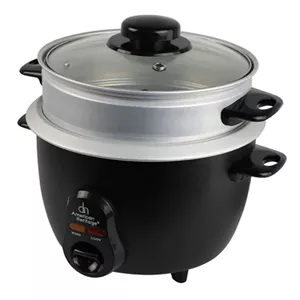
The American Heritage 1.0L, 5-cup Glass Lid Rice Cooker could be a great choice for folks looking for a compact and portable rice cooker that comes with a glass lid and a handy keep-warm feature. It features a non-stick inner pot that’s removable and a breeze to clean.
Pros:
- User-friendly
- Delivers consistent results every time
- Saves time with faster rice cooking compared to traditional methods
- It can also prepare dishes like soups, stews, and chili
Cons:
- More expensive than the conventional methods of cooking rice
- Not suitable for small kitchens
2. Camel SK-70S Rice Cooker
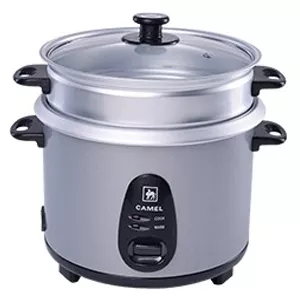
The Camel SK-70S Rice Cooker stands out as an uncomplicated and user-friendly kitchen gadget capable of preparing a substantial quantity of rice in a single batch. Its versatility and convenience are further enhanced by the inclusion of a steamer tray and a removable inner pot.
Pros:
- Large capacity of 10 cups
- With an aluminum inner bowl and steamer tray
- Equipped with fully insulated handles and sturdy legs
Cons:
- Lacks a digital display or timer
- No indication of cooking progress
- No automatic shut-off feature
3. Dreepor Mini Rice Cooker With Steamer
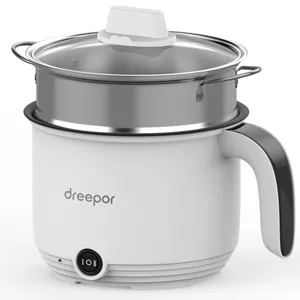
Shopee’s Choice
The Dreepor Mini Rice Cooker with Steamer is a small electric multi-cooker that can cook rice and steam food. Its compact size and multi-functionality make it a great option for those who want to cook rice and steamed food without taking up too much space in the kitchen.
Pros:
- Small and compact size
- Multi-function cooker
- Non-stick inner pot
- Comes with a steamer basket
- Has a handle for easy carrying
Cons:
- The cooking time is longer than expected
- The 1.8L capacity is not be enough for larger families
4. Fukuda FRC15 Rice Cooker
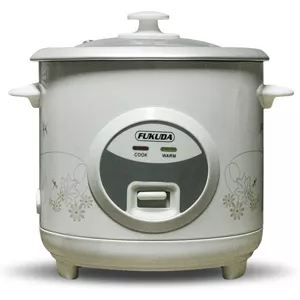
The Fukuda FRC15 Rice Cooker stands as an 8-cup rice cooker and warmer with a generous 1.5L capacity. Its simplicity of operation, wide range of cooking choices, and the ability to keep your rice warm for hours make it a valuable asset in any kitchen.
Key Features:
- Automatically maintains rice at an ideal warmth for extended periods
- Removable rice bowl
- Detachable cord
- Large capacity
5. Gaabor Smart Rice Cooker
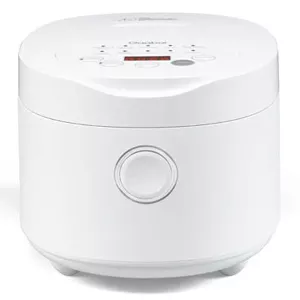
The Gaabor Smart Rice Cooker is an automatic device designed for cooking rice. It comes with various features, advantages, and disadvantages. Notable features of this rice cooker comprise a user-friendly one-touch lid opening that prevents scalding and a non-stick spherical inner pot with added thickness.
Pros:
- User-Friendly
- Reliable and safe to use.
- Hygienic and pollution-free
- Keep Food Warm
- Large Capacity:
- Speedy Cooking
- One-Touch Operation
- Multi-functional
Cons:
- Limited Features
6. Imarflex IRJ-60T Rice Cooker
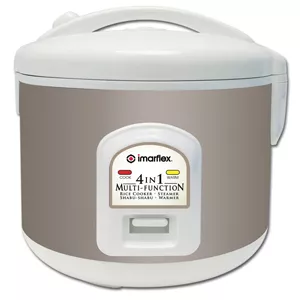
The Imarflex IRJ-60T Portable Rice Cooker is a small and handy kitchen device designed to cook rice and keep it warm for up to 6 hours. While its compact size may not be ideal for larger families or gatherings, it offers some useful features like a spill-preventing cover lock and a cool-touch cover, making it a safe and practical choice for daily cooking.
Pros:
- Portable and easy to transport
- Cooks up to 3 cups of rice
- Equipped with a cover lock
- Includes a convenient carrying handle
- Made with teflex coating
Cons:
- Limited rice-cooking capacity
7. Kyowa KW-2043 with Steamer Rice Cooker
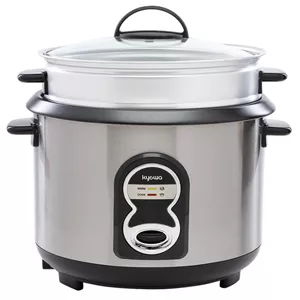
Best Eco-Friendly Rice Cooker
The Kyowa KW-2043 rice cooker boasts a 1.5-liter capacity and is equipped with a convenient steamer tray. It features a user-friendly soft-touch switch for both cooking and keeping your food warm.
Pros:
- 1.5-liter capacity
- Includes a steamer tray
- The non-stick pot simplifies the cleaning process
- Comes complete with a rice spoon, and measuring cup
Cons:
- Lacks advanced features
8. Micromatic MJRC-5028 Rice Cooker

The Micromatic MJRC-5028 Rice Cooker is a 1.5-liter rice cooker that can make 8 cups of rice. It’s a straightforward and user-friendly appliance that also includes a steamer basket.
Pros:
- Large 1.5L capacity
- Easy to operate
- Keeps your rice warm
- Easy to clean
- Comes with a convenient steamer basket
Cons:
- Has limited features
9. OOKAS Large Capacity 6L Home Multifunctional Electric Rice Cooker
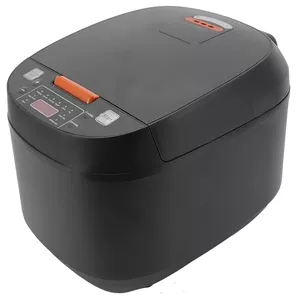
Most Affordable Rice Cooker
The OOKAS Large Capacity 6L Home Multifunctional Electric Rice Cooker is a versatile kitchen appliance. It can handle different types of rice and grains, steam food, slow cook, and prepare hot cereal.
Key Features:
- Large 6L capacity
- One-button cooking
- Multiple cooking presets
- 360-degree induction technology
- 15-hour delay start and automatically keeps food warm
10. Philips HD4515 Rice Cooker

Best Multi-Function Rice Cooker
The Philips HD4515 rice cooker stands out as a modern digital appliance designed to elevate your cooking experience. It employs innovative “Smart 3D” technology to ensure even and thorough rice heating by circulating heat from the top, side, and bottom.
Pros:
- Bakuhanseki Coating Inner Pot
- 10 Multifunction Programs
- Automatic Keep Warm Function
- 24-Hour Preset Timer
- Large Digital Display
- Fully Detachable Inner Lid
- Easy-to-Read Water Level Indicator
- 5-Layer Crystal Black Pot
Cons:
- Harder to clean than the cheap rice cookers
- No Slow Cooker Function
11. Standard SRG 1.8L Rice Cooker
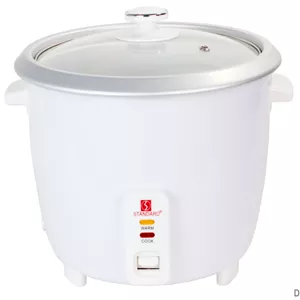
The Standard SRG 1.8L Rice Cooker is a trustworthy kitchen appliance for making rice effortlessly. Its effectiveness, roomy interior, and user-friendly layout make it a sensible option for homes.
Pros:
- Easy to Operate
- Includes a Keep Warm Function
- Sturdy Construction
- Non-stick inner pot
- One-touch operation
- Safe to touch handles
- Steam vent for cooking
Cons:
- Only suitable for cooking rice
- Lacks a timer function
- Basic design
12. Tefal RK5001 Mini Rice Cooker
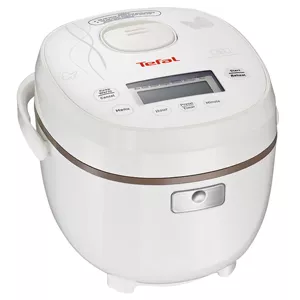
Best Compact Rice Cooker
The Tefal RK5001 Mini Rice Cooker stands out as a compact and versatile kitchen appliance. It provides a variety of cooking options while maintaining a small and convenient design. What’s even better is that it’s budget-friendly and ideal for preparing baby food, making it an appealing choice for those with financial constraints or young kids.
Pros:
- Offers 11 different cooking functions
- Equipped with an inner bowl coating
- Removable inner lid
- Perfect for smaller families (1-2 people)
- Multiple cooking programs
Cons:
- Not suitable for larger families
13. Union UGRC-130 Rice Cooker
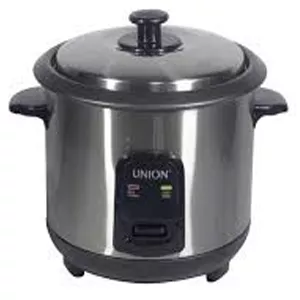
The Union UGRC-130 functions as a rice cooker and warmer, boasting a 1.0 L capacity, which is sufficient for preparing up to 5 cups of rice. Its inner pot features a Teflon coating that’s non-stick, ensuring swift and hassle-free cleaning, which makes it a practical addition to any kitchen.
Pros:
- Modern stainless steel design.
- Automatic keep-warm function
- complete with a measuring cup and a rice ladle
Cons:
- Not suitable for larger families.
14. XIAOMI Mijia Mi C1 Electric Rice Cooker
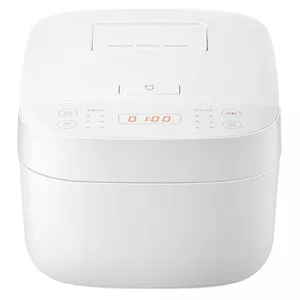
The Xiaomi Mijia Mi C1 Electric Rice Cooker is a well-liked kitchen gadget with numerous smart features. It’s user-friendly with its intelligent appointment setting and automatic functions. Its compact size and foldable handle add to its convenience.
Key Features:
- Large 3L/4L cooking
- Faster cooking time
- Perfect for daily meals
- Foldable handle
- Fully automated
- Can use to cook other dishes
15. Zojirushi NS-WAQ10 5 Cup Smart Rice
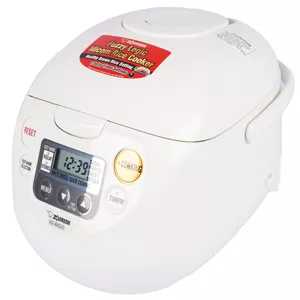
Best Overall Rice Cooker
The Zojirushi NS-WAQ10 5 Cup Smart Rice Cooker is a top-notch kitchen appliance, ensuring flawless rice with every use. This rice cooker features a non-stick inner pot, a convenient built-in timer, and advanced micro-computerized fuzzy logic technology, which enables it to make smart cooking decisions.
Pros:
- User-friendly
- Easy-to-clean container
- Non-stick inner pot
- Includes a handy steam basket
- Durable dent-resistant plastic body
- Micro-computerized fuzzy logic technology
Cons:
- White rice takes approximately 60 minutes to cook
- More expensive than other rice cookers
Why Every Filipino Household Needs a Rice Cooker
In the Philippines, a rice cooker is not just another kitchen appliance; it’s an integral part of daily life. Here are some compelling reasons why every Filipino household should have a rice cooker:
Rice is a Staple
Rice is the heart of Filipino cuisine. It’s not merely a side dish; it’s often the centerpiece of a meal. Whether you’re enjoying adobo, sinigang, or any other Filipino dish, a rice cooker ensures you have perfectly cooked rice every time.
Convenience
Rice cookers are incredibly easy to use. Just measure your rice, add water, and press a button. No need to stand by the stove, worrying about water-to-rice ratios or stirring. It frees up your time for other meal preparations or to spend with your loved ones.
Consistency
A rice cooker guarantees that your rice is cooked consistently. You won’t find undercooked or overcooked grains, which can be common issues when cooking rice on the stovetop.
Time-Saver
With a rice cooker, you don’t need to keep checking if the rice is ready. It automatically switches to the warm setting when the rice is perfectly cooked. This feature is especially handy during busy mornings.
Energy Efficient
Modern rice cookers are designed to be energy-efficient. They use minimal electricity, which is not only good for your household budget but also for the environment.
Multifunctional
Many rice cookers come with additional features like steaming, allowing you to prepare entire meals in one appliance. You can steam vegetables, cook soup, and even make rice cakes.
Keep Warm Function
Rice cookers often have a “keep warm” function that maintains the rice’s temperature for hours. This is particularly useful in Filipino households where members might eat at different times.
Great for Gatherings
If you’re hosting a family gathering, a rice cooker can be a lifesaver. It ensures that there’s always enough rice to go around, and you can focus on entertaining your guests.
How to Choose the Right Rice Cooker
Selecting the perfect rice cooker in the Philippines is essential to ensure you enjoy perfectly cooked rice every time. Here’s a guide to help you make the right choice:
Capacity
Start by determining the capacity you need. Consider the number of people in your household and how much rice you typically consume in one meal. Rice cookers come in various sizes, ranging from small models suitable for individuals or small families to larger ones designed for bigger households. Choosing the right capacity ensures you have enough rice for everyone without excess waste.
Type of Rice Cooker
In the Philippines, rice cookers come in different types, each with its own set of features:
- Basic Rice Cookers. These are straightforward and focus solely on cooking rice. They are budget-friendly and perfect for those who prefer simplicity.
- Fuzzy Logic Rice Cookers. Fuzzy logic technology allows these models to adjust cooking time and temperature based on the type of rice, resulting in consistently well-cooked rice. They are ideal for those who want precision in their rice preparation.
- Multifunctional Rice Cookers. If you desire versatility, opt for a multifunctional rice cooker. These appliances come with additional features like steaming, making porridge, slow cooking, and more. They cater to those who enjoy experimenting with various recipes.
Budget
Set a budget for your rice cooker purchase. Fortunately, there are rice cookers available in a wide price range, making it possible to find one that aligns with your budget. Keep in mind that while basic models are more budget-friendly, advanced rice cookers with additional features come at a higher price point. Choose one that suits your financial constraints while meeting your requirements.
Brand and Warranty
Select a rice cooker from a reputable brand known for producing quality appliances. Well-established brands often provide better customer support and warranties, giving you peace of mind regarding the longevity and reliability of your purchase. A warranty can be particularly valuable in case of unexpected issues.
Additional Features
Consider any extra features you might need to enhance your cooking experience:
- Keep Warm Function. This feature maintains the rice at an ideal serving temperature after cooking, ensuring it’s ready to enjoy even if your meal is delayed.
- Non-Stick Inner Pot. Non-stick pots are easy to clean and prevent rice from sticking to the bottom, simplifying the cleanup process.
Timer Function. Some rice cookers offer a timer function, allowing you to set a specific time for delayed cooking. This is especially handy for those with busy schedules.
How to Use a Rice Cooker
Using a rice cooker is a simple and convenient way to prepare perfectly cooked rice. Here’s a step-by-step guide on how to use a rice cooker effectively.
1. Measure the Rice
Start by measuring the amount of rice you want to cook. Most rice cookers come with a dedicated measuring cup, so use it to ensure you get the right rice-to-water ratio. For reference, one standard cup of uncooked rice typically yields about three cups of cooked rice.
2. Rinse the Rice
Rinsing the rice is an essential step. Place the measured rice in a fine-mesh strainer or a bowl and rinse it under cold running water. Continue rinsing and gently agitating the rice until the water runs clear. This helps remove excess starch and ensures the rice cooks evenly.
3. Add Water
Once the rice is rinsed, transfer it to the inner pot of the rice cooker. Consult your rice cooker’s instructions for the specific water-to-rice ratio, as it can vary depending on the type of rice and the cooker’s design. Typically, the standard ratio is 1.5 to 2 cups of water for every cup of rice. Use the provided measuring cup to add the appropriate amount of water.
4. Start Cooking
Close the lid of the rice cooker securely. Select the desired cooking setting, which is typically labeled as “Cook” or “Rice.” On some advanced models, you may have options for specific rice types such as white rice, brown rice, or sushi rice. Choose the appropriate setting for the type of rice you’re cooking.
5. Let the Cooker Work
After selecting the cooking setting, press the “Start” or “On” button. The rice cooker will now begin the cooking process. It will automatically control the temperature and timing to ensure the rice is perfectly cooked.
6. Enjoy
Once the rice is ready, most rice cookers will automatically switch to a “Keep Warm” function, keeping the rice at an ideal serving temperature. You can leave the rice in the cooker until you’re ready to enjoy it.
7. Fluff the Rice
Before serving, use a fork to fluff the cooked rice gently. This helps to separate the grains and distribute any excess moisture, resulting in light and fluffy rice.
Safety precautions when using Rice Cookers
Using a rice cooker is generally safe, but it’s essential to follow these safety precautions to ensure your well-being and the proper functioning of the appliance:
1. Read the User Manual
Start by thoroughly reading the user manual that comes with your rice cooker. Different models may have specific instructions or safety guidelines. Understanding how your particular rice cooker operates is crucial.
2. Place on a Stable Surface
Ensure that your rice cooker is placed on a stable and level surface. This prevents it from accidentally tipping over during operation, which can be a safety hazard.
3. Keep It Clean
Regularly clean the rice cooker, as described in the maintenance and care section. Keeping the cooker clean not only ensures good hygiene but also prevents any potential electrical hazards caused by a buildup of residue or debris.
4. Don’t Overfill
Avoid overfilling the rice cooker’s inner pot with rice and water. Excessive amounts can cause the rice to spill over, potentially reaching the heating element, which is a safety risk. Follow the recommended water-to-rice ratio specified in your user manual.
5. Never Immerse the Whole Unit
Never immerse the entire rice cooker, including the base, in water or any liquid. The base contains electrical components, and immersing it can lead to electrical shock or damage to the appliance.
6. Inspect the Power Cord
Regularly check the power cord and plug for any signs of wear or damage. If you notice fraying or exposed wires, discontinue use and have the cord replaced by a qualified technician. A damaged cord can be a fire hazard.
7. Use Adequate Ventilation
Ensure that your rice cooker has proper ventilation and is not obstructed during use. Adequate airflow prevents the appliance from overheating and reduces the risk of fire.
8. Stay Near During Operation
While the rice cooker is in use, it’s a good practice to stay nearby. Although rice cookers have safety features like automatic shut-off, it’s wise to monitor the appliance, especially if you’re using it for the first time or cooking different types of rice.
9. Avoid Submerging the Lid
Do not submerge the lid in water or any liquid, as it often contains electrical components and sensors. Only clean the lid according to the manufacturer’s instructions.
10. Unplug After Use
After cooking, always unplug the rice cooker from the electrical outlet. This prevents any residual electrical consumption and minimizes the risk of accidents.
How to Clean and Maintain your Rice Cooker
Proper maintenance and care for your rice cooker are essential to ensure it remains in good working condition and continues to deliver perfectly cooked rice. Here are some tips to help you maintain your rice cooker:
1. Regular Cleaning
After each use, it’s important to clean the inner pot, lid, and any removable accessories. Here’s how to do it:
- Unplug the rice cooker and allow it to cool down before cleaning.
- Remove the inner pot and any accessories like steamer trays.
- Wash these components with warm, soapy water, using a soft sponge or cloth. Avoid abrasive materials that may scratch the non-stick coating.
- Rinse thoroughly to remove all soap residue.
- Wipe the exterior of the rice cooker with a damp cloth. Do not submerge the entire unit in water.
2. Descaling
If you live in an area with hard water, mineral deposits can build up in your rice cooker over time. Descaling helps maintain the appliance’s efficiency. Here’s how to do it:
- Mix equal parts of white vinegar and water in the inner pot.
- Turn on the rice cooker and allow it to complete a regular cooking cycle.
- Once the cycle is finished and the rice cooker has cooled down, discard the vinegar-water mixture.
- Rinse the pot thoroughly.
3. Storage
Proper storage is essential to prevent damage and maintain your rice cooker’s condition. Here’s what to keep in mind:
- Always store the rice cooker with the lid open. This allows any remaining moisture to evaporate and prevents the growth of mold or mildew.
- Ensure the rice cooker is stored in a dry place, away from direct sunlight and heat sources.
4. Regular Inspection
Perform periodic inspections of your rice cooker to ensure it’s functioning correctly. Check for any signs of wear and tear, loose parts, or damage. If you notice any issues, contact the manufacturer or a qualified technician for repair or maintenance.
Personal Insights and Recommendations
In my experience, finding the right rice cooker can be a game-changer. I remember struggling to cook perfect rice, but once I invested in a good rice cooker, it made my life in the kitchen so much easier. Whether it’s for daily meals or special occasions, a reliable rice cooker is a kitchen essential. So, make sure to consider your needs and budget, read reviews, and choose one that suits you best.
Rice Cooker Frequently Ask Questions (FAQs)
What’s the average price range for rice cookers in the Philippines?
The price of rice cookers in the Philippines can vary widely, depending on the brand, features, and capacity.
Can I cook other dishes in a rice cooker?
Yes, many modern rice cookers come with additional functions like steaming, making them suitable for cooking various dishes such as steamed vegetables and soups.
How do I prevent rice from sticking to the bottom of the pot?
To prevent rice from sticking, make sure to rinse it thoroughly before cooking. You can also add a bit of oil to the water, or use a non-stick inner pot if your rice cooker has one.
Are there rice cookers with timers for delayed cooking?
Yes, some rice cookers offer a delay timer feature, allowing you to preset the cooking time for later.
What’s the difference between basic and fuzzy logic rice cookers?
Fuzzy logic rice cookers have advanced cooking algorithms that adjust temperature and time for different types of rice, resulting in consistently better-cooked rice compared to basic models.
Can I use a rice cooker to make other grains besides rice?
Yes, rice cookers can be used to cook other grains like quinoa, barley, and oatmeal.
What’s the ideal rice-to-water ratio?
The ratio varies by rice type, but a common guideline is 1:2 (rice to water) for white rice.
Are rice cookers energy-efficient?
Rice cookers are generally energy-efficient due to their automatic shut-off feature.
What is the “keep warm” function?
Most rice cookers have a “keep warm” setting that keeps the rice at an ideal serving temperature after cooking.
What’s the average lifespan of a rice cooker?
With proper care, a rice cooker can last for several years, sometimes even a decade.
Conclusion
Investing in a rice cooker in the Philippines is a wise choice for households that value convenience, consistency, and deliciously cooked rice. With the right information, selecting the perfect rice cooker becomes a straightforward process. Enjoy perfectly cooked rice every time and explore the versatility of these handy kitchen appliances.
Written By
With a solid foundation in family dynamics, child development, and a knack for assessing products, our content is built on a strong grasp of our topics. We use trustworthy sources, seek advice from experts, and stay current with the latest happenings in our fields. We always give credit to our sources, reveal any possible conflicts of interest, and deliver info in a truthful and unbiased way. Follow us on Facebook or join our Facebook Group.
Start your journey to confident parenting
Join over 2,000+ parents who receive free practical advice and tips from Joyful PH. Unsubscribe anytime.
You may also like
11 Best Stand Mixers in the Philippines
Choosing the right stand mixer can transform your baking routine, from whipping…
11 Best Water Purifiers in the Philippines
Accessing truly clean drinking water is a critical need in the Philippines.…
11 Best Smart Door Locks in the Philippines
Discover the 11 best smart door locks available in the Philippines today,…
11 Best Food Processors in the Philippines
Discover the top food processors available in the Philippines—versatile…
11 Best Robot Vacuum Cleaners in the Philippines
Looking to simplify your cleaning routine? Robot vacuum cleaners have become…
11 Best Turbo Broilers in the Philippines
Turbo broilers have become a kitchen staple in many Filipino homes, offering a…


